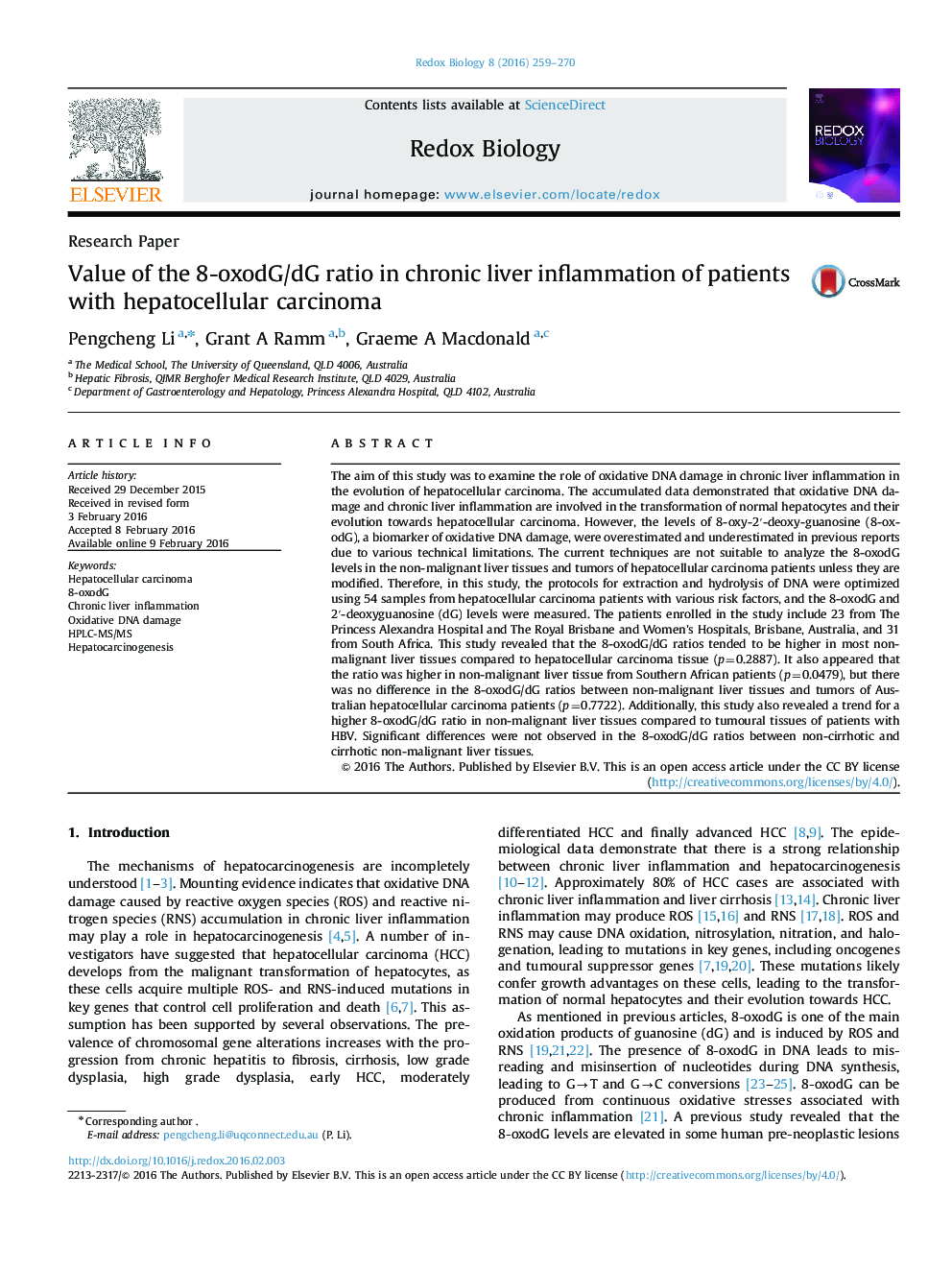| کد مقاله | کد نشریه | سال انتشار | مقاله انگلیسی | نسخه تمام متن |
|---|---|---|---|---|
| 1922872 | 1535842 | 2016 | 12 صفحه PDF | دانلود رایگان |

• Higher ratios of 8-oxodG/dG in most non-malignant liver tissues than HCC tissues.
• Higher ratio in the non-malignant liver tissues than tumors of patients with HBV.
• No significant differences of ratios of 8-oxodG/dG between no-cirrhosis and cirrhosis.
• A suitable method for 8-oxodG measurement from human liver tissues.
The aim of this study was to examine the role of oxidative DNA damage in chronic liver inflammation in the evolution of hepatocellular carcinoma. The accumulated data demonstrated that oxidative DNA damage and chronic liver inflammation are involved in the transformation of normal hepatocytes and their evolution towards hepatocellular carcinoma. However, the levels of 8-oxy-2′-deoxy-guanosine (8-oxodG), a biomarker of oxidative DNA damage, were overestimated and underestimated in previous reports due to various technical limitations. The current techniques are not suitable to analyze the 8-oxodG levels in the non-malignant liver tissues and tumors of hepatocellular carcinoma patients unless they are modified. Therefore, in this study, the protocols for extraction and hydrolysis of DNA were optimized using 54 samples from hepatocellular carcinoma patients with various risk factors, and the 8-oxodG and 2′-deoxyguanosine (dG) levels were measured. The patients enrolled in the study include 23 from The Princess Alexandra Hospital and The Royal Brisbane and Women's Hospitals, Brisbane, Australia, and 31 from South Africa. This study revealed that the 8-oxodG/dG ratios tended to be higher in most non-malignant liver tissues compared to hepatocellular carcinoma tissue (p=0.2887). It also appeared that the ratio was higher in non-malignant liver tissue from Southern African patients (p=0.0479), but there was no difference in the 8-oxodG/dG ratios between non-malignant liver tissues and tumors of Australian hepatocellular carcinoma patients (p=0.7722). Additionally, this study also revealed a trend for a higher 8-oxodG/dG ratio in non-malignant liver tissues compared to tumoural tissues of patients with HBV. Significant differences were not observed in the 8-oxodG/dG ratios between non-cirrhotic and cirrhotic non-malignant liver tissues.
Figure optionsDownload as PowerPoint slide
Journal: Redox Biology - Volume 8, August 2016, Pages 259–270